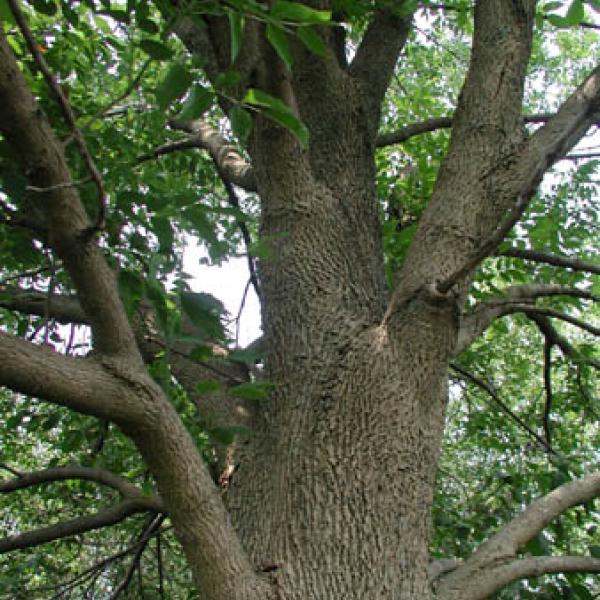
Since the discovery of emerald ash borer (EAB) in 2002, the news of the infestation has been bleak. Containment efforts have failed to stop the relentless spread of this ash-killing pest and billions of trees are at risk.
Now that the dust is settling after the initial infestation in the Midwest, scientists are able to research whether any ash trees were able to survive. Called “lingering ash”, these trees are ones that have persisted through the infestation.
Initial reports of survival from the Detroit metropolitan area indicated that ash trees had no resistance to the insect. This, however, is thought to be due to the fact that urban trees tend to have limited genetic diversity, since they come from only a few horticultural selections of the species. Once the emerald ash borer spread into more genetically diverse native stands of ash trees, scientists began noticing that a small percentage of trees were able to persist.
Scientists from the United States Forest Service and Ohio State University established research plots in native stands and woodlots in order to monitor the impact of EAB. The researchers use the plots to identify trees that may be lingering ash and propagate them through grafting. (Grafting allows for the preservation of the tree while replicating its genetics for study). Bioassays are then performed to determine if the lingering ash is resistant to the EAB and if so, what mechanisms may be allowing it to survive. A critical research question is whether the lingering ash are truly resistant (able to prevent an EAB infestation and thrive at a more natural, non-epidemic level of EAB) or if they are only tolerant (only able to survive at a low level of infestation). Scientists are hoping to find truly resistant trees, but even tolerent ones may prove useful in efforts to breed ash trees that are resistant to EAB. To find out more about this research project, click here.
The research was undertaken in 2010 with surveys in northwest Ohio where EAB had killed most of the ash trees two years before. At that time researchers found that 2.6% of the ash trees were alive and of those 1% of them were healthy. When the researchers went back in 2011 they found that most of the healthy trees remained in good condition, where as the ones with unhealthy canopies had declined or died in the intervening year.
This pattern was replicated in a study undertaken in southeast Michigan in 2010 where 39 ash trees remained alive in a plot after an EAB infestation. When the researchers returned in 2011 they found that most of the trees that had healthy canopies in 2010 remained healthy in 2011, while trees with unhealthy canopies had declined or died.
At both sites, some of the trees with healthy canopies show evidence of past EAB infestation, while others have no symptoms.
The implications of this research are still uncertain, but scientists are hopeful that this research may lead to the successful identification or breeding of an EAB resistant ash tree.
By Mollie Klepack, Forest Pest Outreach Coordinator, UVM Extension
Photo credit: Upper Valley Land Trust